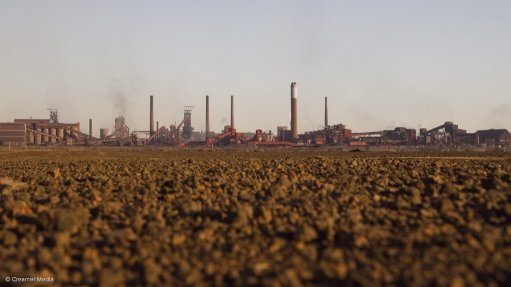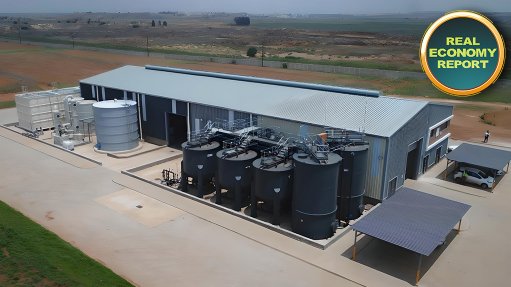Q2 household financial resilience retreats marginally, but comparative decline concerning
After remaining stable at a new record high for three successive quarters, the latest Altron FinTech Household Resilience Index (AFHRI) took a slight dip in the second quarter, both in terms of its quarterly value and the four-year average since it was launched.
The latter value has returned to the same level as a year earlier, but still at a higher level than before the pandemic.
In recognition of the need for data that provides more clarity on the financial disposition of households in general and their ability to cope with debt in particular, Altron FinTech says it commissioned economist and economic adviser to the Optimum Investment Group, Dr Roelof Botha, to assist in designing this index.
The AFHRI comprises 20 different indicators, weighted according to the demand side of the short-term lending industry and calculated on a quarterly basis, with the first quarter of 2014 being the base period, equalling an index value of 100.
Botha says the latest quarterly reading of 109.2 is marginally lower than the level of 109.9 recorded in the first quarter of the year, but 1.3% lower than a year ago.
“The quarter-on-quarter decline of 0.6% in the index value is a cause for concern, as this is substantially worse than the country’s gross domestic product (GDP), which increased by almost 4% in real terms between the first and second quarters of 2022, deflated of course by the consumer price index (CPI),” he notes.
Botha mentions that an encouraging feature of the latest AFHRI is the consistent improvement in the disposable income of households, which is one of only three indicators that has shown growth over all four periods analysed.
Botha says the AFHRI trend line shows a broad similarity with a number of other key economic indicators, including GDP and retail trade sales.
“The marginal decline in the value of the AFHRI during the second quarter is in line with the South Africa Reserve Bank’s leading composite business cycle, which also retreated modestly from an all-time high recorded in the first quarter of the year.
“Several other indicators of business and consumer confidence have also come under pressure as a result of rising inflation, higher interest rates and heightened geopolitical uncertainty.
“The latter is due to the war in Ukraine, Europe’s energy crisis, a struggling Chinese economy and indications of a looming recession in several high-income countries,” he outlines.
Botha highlights that employment and labour remuneration in the public and private sectors enjoy a relatively high weighting in the AFHRI, as these indicators represent the mainstay of the financial disposition of most households.
“One of the advantages of scrutinising the AFHRI is that it allows comparisons on a time series basis of 20 different indicators that have a bearing on the financial resilience of households, expressed in real terms, that is, deflated by the CPI.
“Major variations in individual indicators may serve as guidelines for the likelihood of a future improvement or deterioration of household finances,” he explains.
KEY POINTS
The performance of the index has been lagging behind that of the economy as a whole, especially since 2020. Although the AFHRI has increased by 1.2% since the first quarter of 2020 (pre-Covid-19), the increase in GDP over this period was substantially higher, at 4.7% in real terms.
One of the reasons for this variance is related to the lagging recovery of private sector employment, which has also impacted negatively on remuneration levels.
Positively, however, employment in both the private and public sectors increased during the first half of this year, which should provide a measure of support for the AFHRI for the remainder of the year.
Since the base period for the index, only two of the 20 indicators recorded materially negative outcomes, namely the reciprocal of credit impairments by banks and long-term insurance claims paid, both of which can be attributed to the negative effects of the pandemic.
On a year-on-year basis, only three of the 20 indicators recorded declines of more than 10%. All three are related to lower levels of lump-sum payments received from long-term insurers and pension funds, which experienced abnormal peaks during the worst of the pandemic and should start following a normalised trend over the next two quarters.
Although the ratio of household income to debt costs has improved considerably since 2020, negative quarter-on-quarter and year-on-year readings were recorded during the second quarter. With interest rates on the rise, this indicator is expected to weigh on the AFHRI for the rest of this year.
In recent months, the mood among consumers has become decidedly downbeat, owing mainly to high fuel prices, rising inflation, higher interest rates and the regular occurrence of electricity load-shedding.
Against this backdrop, it is unlikely that the AFHRI will reverse the latest downward trend during the third quarter, the company notes.
In the event of inflation and oil prices declining further and the rand exchange rate recovering from a rampant dollar before the end of the year, the AFHRI could well experience a boost in the fourth quarter, especially when also considering the traditional spike in household consumption expenditure, fuelled by Black Friday sales and Christmas bonuses.
Owing to the strong positive correlation between private sector credit extension and GDP growth, it has become a matter of urgency for government to reconsider the undue regulatory burden that has been placed on the formal micro finance sector. Unless lower-income groups are allowed easier access to credit, the pace of employment creation in South Africa will remain muted, the index indicates.
Comments
Press Office
Announcements
What's On
Subscribe to improve your user experience...
Option 1 (equivalent of R125 a month):
Receive a weekly copy of Creamer Media's Engineering News & Mining Weekly magazine
(print copy for those in South Africa and e-magazine for those outside of South Africa)
Receive daily email newsletters
Access to full search results
Access archive of magazine back copies
Access to Projects in Progress
Access to ONE Research Report of your choice in PDF format
Option 2 (equivalent of R375 a month):
All benefits from Option 1
PLUS
Access to Creamer Media's Research Channel Africa for ALL Research Reports, in PDF format, on various industrial and mining sectors
including Electricity; Water; Energy Transition; Hydrogen; Roads, Rail and Ports; Coal; Gold; Platinum; Battery Metals; etc.
Already a subscriber?
Forgotten your password?
Receive weekly copy of Creamer Media's Engineering News & Mining Weekly magazine (print copy for those in South Africa and e-magazine for those outside of South Africa)
➕
Recieve daily email newsletters
➕
Access to full search results
➕
Access archive of magazine back copies
➕
Access to Projects in Progress
➕
Access to ONE Research Report of your choice in PDF format
RESEARCH CHANNEL AFRICA
R4500 (equivalent of R375 a month)
SUBSCRIBEAll benefits from Option 1
➕
Access to Creamer Media's Research Channel Africa for ALL Research Reports on various industrial and mining sectors, in PDF format, including on:
Electricity
➕
Water
➕
Energy Transition
➕
Hydrogen
➕
Roads, Rail and Ports
➕
Coal
➕
Gold
➕
Platinum
➕
Battery Metals
➕
etc.
Receive all benefits from Option 1 or Option 2 delivered to numerous people at your company
➕
Multiple User names and Passwords for simultaneous log-ins
➕
Intranet integration access to all in your organisation


















